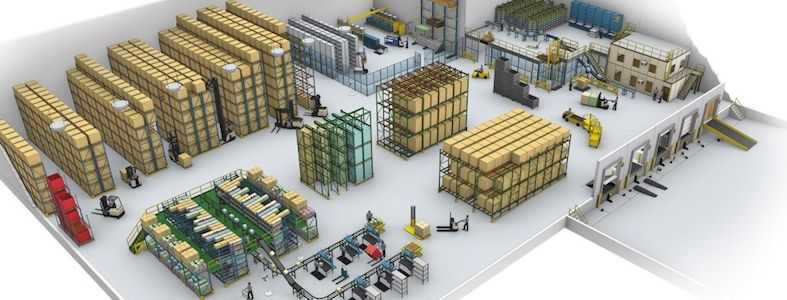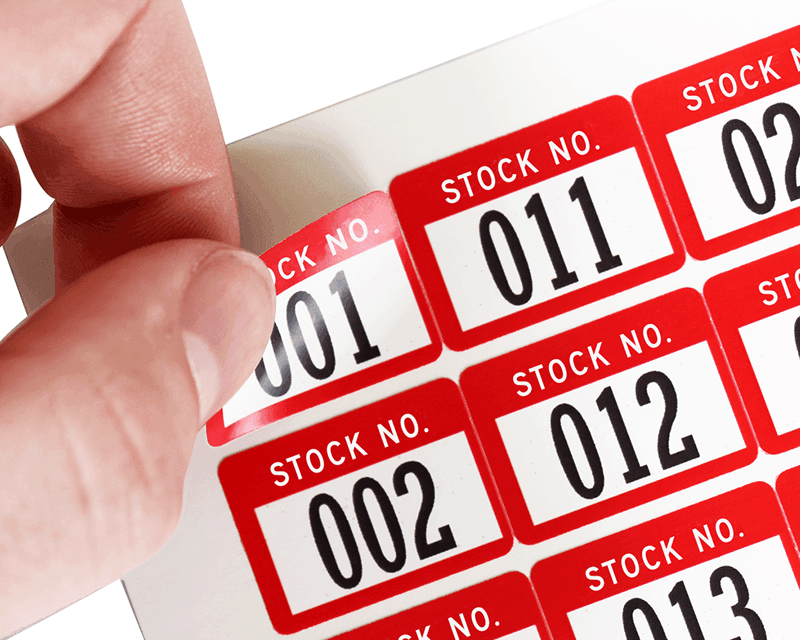5 Tips For Better Warehouse Inventory Management
Warehouse inventory management is about efficiency and effectiveness. Efficiency is about doing it right in terms of cost and time. Effectiveness is about doing the right things in terms of accuracy and safety.
With the right inventory management strategies and tools, you can optimize your warehouse inventory levels to achieve up to 50% in bottom-line savings. For any size business, that level of savings would be a difference maker.

1. Optimize Warehouse Design
The layout of your warehouse can have a dramatic effect on warehouse inventory management. Allocating the right space for key activities and designing the layout to suit your products and operational workflow is key to your business success.
If you fail to allocate enough space to receive goods, you may suffer errors during the receiving of purchased inventory right from the start. The insufficient space will cause difficulty when employees try to account for stock: deliveries can get mixed up or recorded incorrectly, if at all.
Errors in receiving can easily have a domino effect on the rest of your operation. For example, incorrect initial inventories allocated to warehouse shelves can result in incorrect picking and incorrectly packed orders, ultimately leading to customer complaints. When stock gets lost, needless disputes with suppliers can arise, wasting time, effort and money to resolve this issue.
To optimize space in your warehouse, start by allocating requisite space for storage, picking, and movement of stock. Then consider the various activities, their space requirements, inputs and outputs, and overall sequence within the warehouse to create the most efficient stock flow. The aim is to flow the stock from receiving, through picking and assembling orders and finally to fulfillment in the most efficient manner and shortest time possible.
Additional steps include organizing your warehouse by-product velocity rather than a simple category-based arrangement, choosing clear, easily identifiable labeling, and reducing aisle widths where possible, based on your warehouse vehicles/machinery. All of which we discuss below.

2. Build Safety In
A warehouse is a dangerous working environment. Hazards exist in every type and scale of warehouses you might have and include falling stock, injury from machinery or vehicles, and fire. Injuries can also be caused by simple activities, for example, lifting, using knives or other sharp objects, and slips, trips, and falls.
An accident to a warehouse worker is not only a personal tragedy for them, but also a risk to your reputation as a responsible employer. Importantly, it’s also a financial risk to your business, in the form of litigation, damages, and increasing insurance premiums.
Effective safety management in a warehouse starts with a thorough assessment of the risks. Study each risk and design the hazards out of the operation. If it is not practical to do this, you can use alternate methods to mitigate the risk such as employee safety training as well as purchasing personal protective equipment.
At the initial stage of designing your warehouse space, you will have to keep people and vehicle movements in mind. Some basic principles include reducing the traffic movements in your warehouse and keeping people and vehicle transport apart.
3. Training Your People


Human error is one of the most common causes of errors in a warehouse inventory management system. The key to reducing this error is to provide your workers the right amount and type of training.
Put effort into identifying the most efficient and effective ways of working in your warehouse environment. By basing your training on these internal best practices, your employees will be able to work more productively and efficiently.
The maxim “garbage in, garbage out” very much applies when it comes to training. Developing an organizational culture and training curriculum highlighting and incentivizing the importance of maintaining working accuracy, following processes correctly, and personal responsibility will surely have long-term benefits. Setting clear expectations right from the start will help your employees understand what’s expected of each of them and how that generates success for the overall business.
4. Have Rational Picking Locations
Optimizing picking efficiency and accuracy is best accomplished by rationalizing picking locations. When organizing your picking locations, ensure your products are kept separate, for example creating specific locations for each item of stock or SKU (Stock Keeping Unit). Typically, this is a picking bin in a bin location on a shelf or pallet space in the warehouse.
One thing to take note of is that SKUs should not be mixed together in a single location. This will lead to errors in picking and checking. It is also less efficient if a picker has to search for the SKU in a mixed bin.
Additional tips to keep in mind when determining locations for bins:
- Plan bin locations with regard to product velocity, or to put it another way, the frequency of picking and shipping.
- Have the most often picked items in the easiest to pick and replenish locations.
- Consider having multiple picking locations for high-volume SKUs.
- Consider the size and quantities of stock involved when deciding the bin location for that SKU. Larger, high-frequency items might be better picked from pallets that are easy to replenish. Small low-frequency items may be best picked from small bins at easily reachable heights.
After setting up your pick locations, periodic reviews are critical to ensuring optimal picking efficiency and accuracy.
A5. Label It
If you have products anywhere in your warehouse, put a label on it. Goods being received should have a label applied to them before they are even moved into your warehouse. Typically labels contain stock keeping unit (SKU) number or a Universal Product Code (UPC).
Clear labels will make identifying the product, moving it, picking it and shipping it easier for workers, which in turn will help them reduce errors.
Thermal printers can also produce labels with barcodes. A barcode will enable identification using a scanner and also opens up the opportunity to capture data for stock movements using an inventory management system.
Finally, it’s not only important to clearly label products, but also very important to ensure bins, shelves, and other locations in your warehouse are clearly labeled and easily identifiable.

